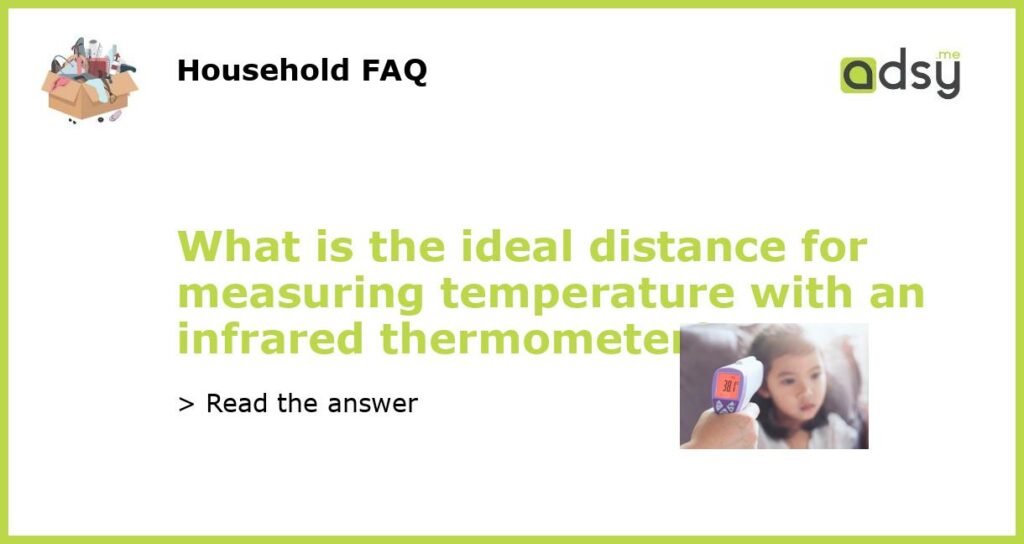Understanding Infrared Thermometers
An infrared thermometer is a non-contact temperature measurement device that uses infrared radiation to determine the temperature of an object or surface. Infrared thermometers work by detecting the amount of infrared radiation emitted by the object, which corresponds to its temperature. This makes infrared thermometers incredibly useful for a wide range of applications, including industrial processes, scientific research, and clinical medicine.
Choosing the Right Distance for Temperature Measurement
When using an infrared thermometer, it is important to choose the ideal distance for measuring the temperature of an object or surface. The optimal distance is typically determined by the type of infrared thermometer being used, as well as the size and distance of the object being measured.
Factors to Consider
Several factors should be considered when choosing the ideal distance for measuring temperature with an infrared thermometer. These include the size of the object being measured, the emissivity of the material, and the ambient temperature in the surrounding environment. In general, the ideal distance for measuring temperature is the one that allows the infrared thermometer to accurately measure the temperature without interference from external factors.
The Importance of Calibration
Regardless of the ideal distance for measuring temperature, it is important to ensure that the infrared thermometer is properly calibrated to provide accurate readings. Calibration is the process of verifying the accuracy of the instrument compared to a known standard. This can typically be done using a calibration source or a reference thermometer.
Conclusion
Choosing the ideal distance for measuring temperature with an infrared thermometer depends on several factors, including the size of the object being measured, the emissivity of the material, and the ambient temperature in the surrounding environment. It is important to ensure that the infrared thermometer is properly calibrated to provide accurate readings. By following these guidelines, users can obtain reliable and accurate temperature measurements for a variety of applications.






